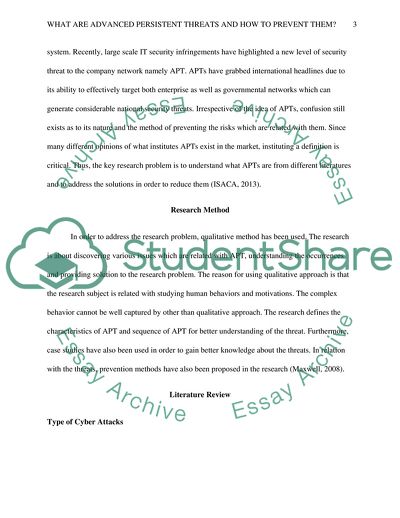Cite this document
(What Are Advanced Persistent Threats and How to Prevent Them Research Paper Example | Topics and Well Written Essays - 5000 words, n.d.)
What Are Advanced Persistent Threats and How to Prevent Them Research Paper Example | Topics and Well Written Essays - 5000 words. https://studentshare.org/information-technology/1807476-what-are-advanced-persistent-threats-and-how-to-prevent-them
What Are Advanced Persistent Threats and How to Prevent Them Research Paper Example | Topics and Well Written Essays - 5000 words. https://studentshare.org/information-technology/1807476-what-are-advanced-persistent-threats-and-how-to-prevent-them
(What Are Advanced Persistent Threats and How to Prevent Them Research Paper Example | Topics and Well Written Essays - 5000 Words)
What Are Advanced Persistent Threats and How to Prevent Them Research Paper Example | Topics and Well Written Essays - 5000 Words. https://studentshare.org/information-technology/1807476-what-are-advanced-persistent-threats-and-how-to-prevent-them.
What Are Advanced Persistent Threats and How to Prevent Them Research Paper Example | Topics and Well Written Essays - 5000 Words. https://studentshare.org/information-technology/1807476-what-are-advanced-persistent-threats-and-how-to-prevent-them.
“What Are Advanced Persistent Threats and How to Prevent Them Research Paper Example | Topics and Well Written Essays - 5000 Words”. https://studentshare.org/information-technology/1807476-what-are-advanced-persistent-threats-and-how-to-prevent-them.


